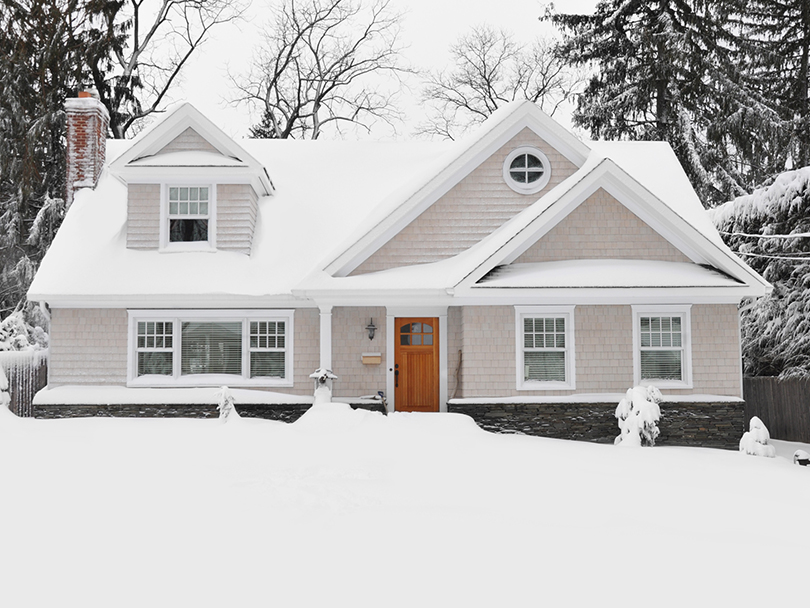By Pat Keegan and Brad Thiessen
Attention to your attic is often the area of your home where you can get the most bang for your buck on energy efficiency investments. Insulation is actually just one part of the energy-efficient attic puzzle. Here are a few tips to keep in mind as you prepare to make your attic more efficient.
The skylight shaft inside the attic needs to be properly sealed before it is insulated. Photo Source: U.S. Department of Energy
Step 1: Sealing
Attics are often the place where warm air leaks out of the home in winter or into the home during summer. Trouble spots include anything that comes through the attic floor, such as recessed lights, the chimney, the attic hatch and pipes, and ducts or wires coming through the attic floor.
It’s best to properly seal these trouble spots before adding or improving the insulation. Invest a small amount of money in the necessary supplies, such as caulk, expanding foam or weather stripping, to seal any air leaks in your attic.
Step 2: Ventilation
Many attics are under-ventilated, which allows moisture and heat to build up. Moisture causes harmful mold and wood rot. During the summer, a poorly ventilated attic is prone to overheating, which can bake shingles and shorten their life. During the winter, a warm attic can melt snow on the roof, causing it to run into your gutters and then freeze, causing ice dams.
Proper attic ventilation lets air flow from a low point to a high point. This is usually done by installing soffit vents and insulation baffles around the perimeter, plus vents near the peak of the roof. If there is no way to install enough attic ventilators, an attic fan can be installed to provide mechanical assistance to exhausting overheated air.
Insulation baffles allow air to move from the soffit vents to flow freely into the attic space. Photo Credit: Mark Nichols
Step 3: Insulation
The three main types of insulation for attics are loose-fill, batt and rigid. Whichever type you have, it needs to provide a high-enough level of insulation for your region, measured in R-value.
Batt and rigid insulation will often have the R-value printed on them. Loose-fill, which is blown in, is the most common for attic floors, and its R-value is approximately its depth in inches multiplied by 2.8. Generally speaking, your attic should have anywhere from 11 to 24 inches of loose-fill insulation, depending on where you live. You can find the recommended level for your region at www.energy.gov.
If you have loose-fill insulation that is less than the recommended amount, you should be able to simply add more on top of it, as long as there aren’t any moisture, rodent, ant or termite problems. If your existing loose-fill insulation was installed before 1990, it could be Vermiculite, which may be contaminated with asbestos. Asbestos can cause cancer when particles are released into the air, so it’s a good idea to have the insulation tested. If it’s contaminated, have it removed by a professional before beginning work.
Remember to seal and insulate any walls in the attic that border conditioned space, such as skylight openings.
Some of these steps can be challenging, so consider hiring a professional contractor. If you’re a DIY pro and decide to do some of the work on your own, be aware of potential hazards. Disturbing old wiring can cause shorts in your electrical system, and roofing nails will often pierce the attic ceiling.
Another danger is stepping off the rafters. Years ago, I (Pat) decided to do some work in my own attic on a hot afternoon. The heat must have gotten to me because I slipped and crashed through the attic floor. My daughters were quite surprised to see their dad’s legs dangling from the ceiling, with broken sheetrock and insulation everywhere. What a mess! First and foremost, always remember safety when tackling projects at home.
We hope these tips will help you take the next steps to a more energy-efficient attic.
This column was co-written by Pat Keegan and Brad Thiessen of Collaborative Efficiency. For more information on ensuring an energy-efficient attic, please visit: www.collaborativeefficiency.com/energytips.

